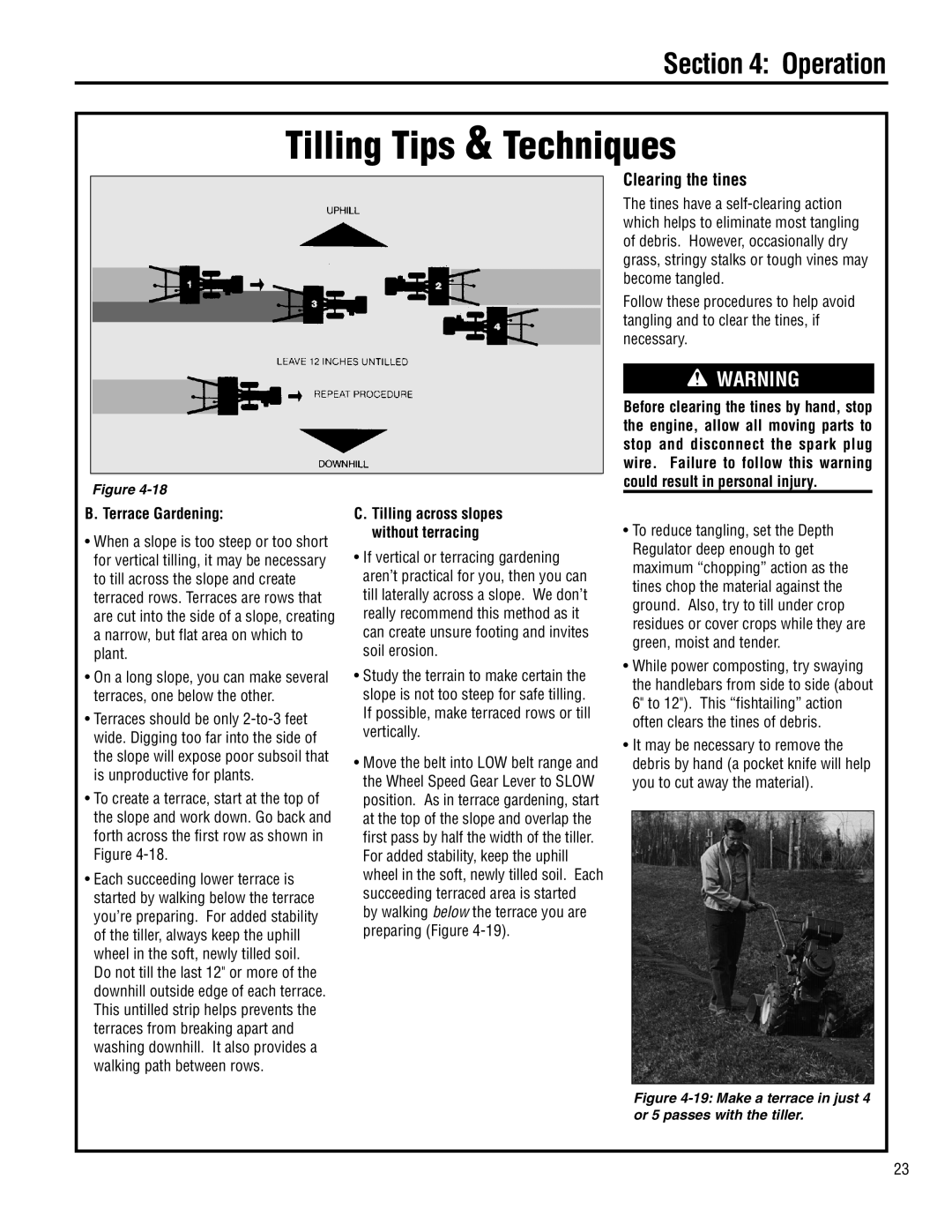
Section 4: Operation
Tilling Tips & Techniques
Figure
B. Terrace Gardening:
•When a slope is too steep or too short for vertical tilling, it may be necessary to till across the slope and create terraced rows. Terraces are rows that are cut into the side of a slope, creating a narrow, but flat area on which to plant.
•On a long slope, you can make several terraces, one below the other.
•Terraces should be only
•To create a terrace, start at the top of the slope and work down. Go back and forth across the first row as shown in Figure
•Each succeeding lower terrace is started by walking below the terrace you’re preparing. For added stability of the tiller, always keep the uphill wheel in the soft, newly tilled soil. Do not till the last 12" or more of the downhill outside edge of each terrace. This untilled strip helps prevents the terraces from breaking apart and washing downhill. It also provides a walking path between rows.
C. Tilling across slopes without terracing
•If vertical or terracing gardening aren’t practical for you, then you can till laterally across a slope. We don’t really recommend this method as it can create unsure footing and invites soil erosion.
•Study the terrain to make certain the slope is not too steep for safe tilling. If possible, make terraced rows or till vertically.
•Move the belt into LOW belt range and the Wheel Speed Gear Lever to SLOW position. As in terrace gardening, start at the top of the slope and overlap the first pass by half the width of the tiller. For added stability, keep the uphill wheel in the soft, newly tilled soil. Each succeeding terraced area is started by walking below the terrace you are preparing (Figure
Clearing the tines
The tines have a
Follow these procedures to help avoid tangling and to clear the tines, if necessary.
![]() WARNING
WARNING
Before clearing the tines by hand, stop the engine, allow all moving parts to stop and disconnect the spark plug wire. Failure to follow this warning could result in personal injury.
•To reduce tangling, set the Depth Regulator deep enough to get maximum “chopping” action as the tines chop the material against the ground. Also, try to till under crop residues or cover crops while they are green, moist and tender.
•While power composting, try swaying the handlebars from side to side (about 6" to 12"). This “fishtailing” action often clears the tines of debris.
•It may be necessary to remove the debris by hand (a pocket knife will help you to cut away the material).
Figure 4-19: Make a terrace in just 4 or 5 passes with the tiller.
23
